Two weeks ago, we went down to the Great Smoky Mountains National Park for a weekend of looking at the Trillium in bloom. The drive down was beautiful in itself, with the green haze of early leaves showing on the trees and redbuds (Cercis Canadensis) in bloom along the highways. Once we reached the mountains, the forests were full of dogwoods (Cornus florida) in flower.
In Gatlinburg, we found the forest edges full of False Solomon's Seal (Maianthemum racemosum) in bloom. Its plume of tiny creamy flowers almost perfectly hid the pure white of the trilliums. Underfoot in the mowed zones along the sides of the roads, Wild Stonecrop (Sedum ternatum) was blooming in some areas while Rue Anemone (Anemonella thalictroides) was blooming in others. Violets were everywhere.
Behind the sign at one entrance to the park, swallowtail butterflies were sitting on the bare ground, drinking water from yesterday's rain.
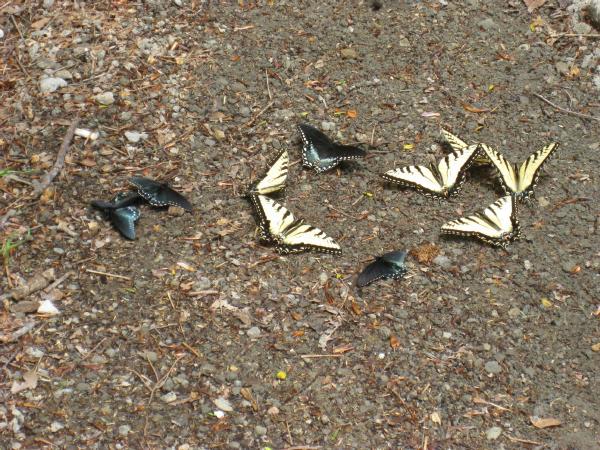
Swallowtail butterflies drinking on the ground.
In the countryside around Gatlinburg, we saw the Yellow Trillium (Trillium luteum) everywhere along the edges of the forests. They seemed almost as common as dandelions. They are abundant up to about 3200 ft. elevation, where they suddenly disappear.
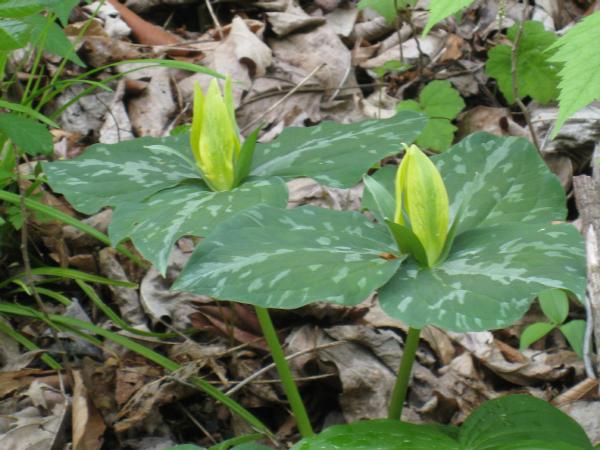
Trillium luteum with a strong green tinge on the outside of the petals.
Great Smoky Mountains National Park.
Much less common is the pure white Sweet Trillium (Trillium simile), which is distinguished from its close relative, the White Wake Robin (Trillium erectum var. album) by its wider, showier petals. It seems to grow up to about 2500 ft. elevation. Pure T. erectum album seems to be found only above about 3000 ft. elevation, and between, the two white species appear to intergrade. Above 3000 ft., T. erectum album continues on up to over 5000 ft. in places.
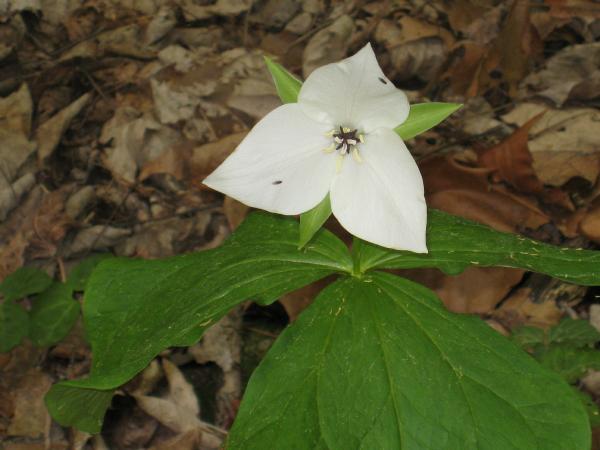
Trillium simile. Note the gnats on the flower -- possible pollinators?
There were mountain glades covered with the White Trillium (Trillium grandiflorum), whose flowers turn pink just before they wilt. I've never seen so many trilliums in one place before in my life, and I started out in life on a farm in north central Indiana, where Spring Wildflower Walks were an annual tradition.
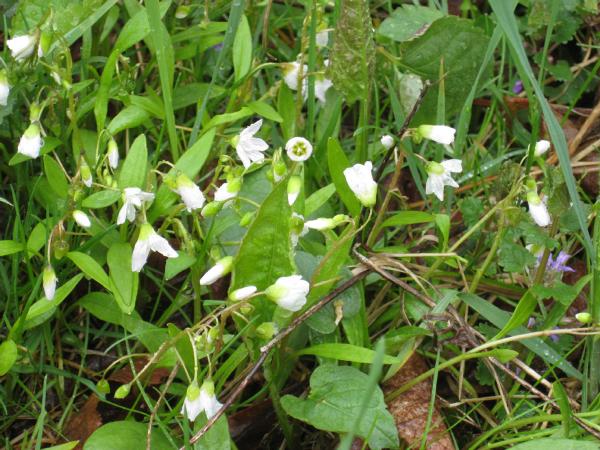
Claytonia caroliniana
At the very top of the mountains, at around 5000 ft. on the road up to Newfound Gap and Clingman's Dome, the ground was full of Broad Leafed Spring Beauty (Claytonia caroliniana) with the occasional yellow Trout Lily (Erythronium umbilicatum) in bud. Here in central Indiana, the local yellow Trout Lily, Erythronium americanum, bloomed a few weeks ago. Up in the very high areas, the only trillium was the occasional T. erectum album. At the highest limits of this plant's range, over 5000 ft. elevation, some of the plants have pink or rose colored blooms, suggesting the influence of the northern red or brown flowered Purple Trillium (T. erectum, var. erectum).
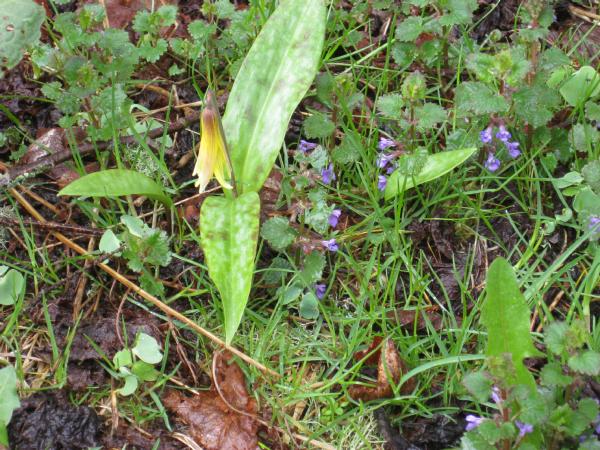
Erythronium umbilicatum at 5000 ft.
Much less common were Trillium rugelii, a white nodding species similar to the northern T. cernuum, and the red nodding species, T. vaseyi. You need a guide, which I had, to find these. Rarer still are T. undulatum and T. catesbaei; we have not seen these at all.
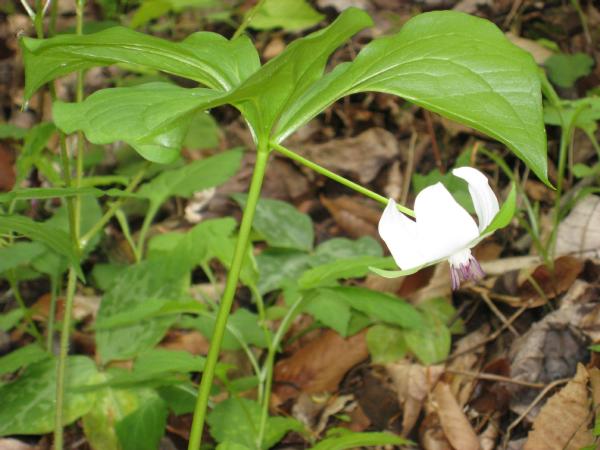
Trillium rugelii
Trillium rugelii has dark red or purple anthers and may have ether a red or a pale ovary.
Good gardening,
Jim